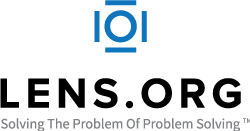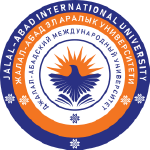Comparative study between Jalalabad and Lahore about dengue fever and lifestyle of people as a preventive measure from mosquitoes
DOI:
https://doi.org/10.63666/ejsmr.1694-9013.2.I.2025.29Keywords:
Dengue Fever, Mosquitoes, Vector borne diseases, Endemic, SanitationAbstract
Dengue fever, a mosquito-borne viral illness, continues to pose a significant threat to public health, particularly in densely populated tropical and subtropical regions. This comparative study explores the influence of lifestyle-related factors on dengue prevalence by analyzing two contrasting urban environments: Jalalabad, Kyrgyzstan (a region with no reported dengue cases) and Lahore, Pakistan (where dengue is endemic).
Using structured questionnaires, data were collected from 300 participants (150 from each city), focusing on awareness, preventive behaviors, sanitation practices, and environmental conditions. Despite limited awareness about dengue in Jalalabad, participants demonstrated healthier lifestyle habits and better environmental management. Conversely, although Lahore respondents showed higher awareness of the disease, their preventive practices and environmental hygiene were less consistent.
The findings underscore a strong relationship between personal and communal lifestyle factors; such as water storage, dietary habits, sanitation, and mosquito protection measures and the likelihood of dengue transmission. The study concludes that enhanced public health education, behavioral interventions, and infrastructure improvements are essential for effective dengue control, particularly in high-risk areas. Promoting healthier lifestyles may serve as a key strategy in reducing the burden of vector-borne diseases globally.
References
1. World Health Organization. Dengue and severe dengue. https://www.who.int/news-room/fact-sheets/detail/dengue
2. World Health Organization. Dengue - Global situation. https://www.who.int/emergencies/disease-outbreak-news/item/2024-DON518
3. BMC Public Health. Factors associated with the increase of dengue cases in Pakistan. https://bmcpublichealth.biomedcentral.com/articles/10.1186/s12889-020-09064-2
4. Frontiers in Public Health. Knowledge, attitude, and practice regarding dengue in Pakistan. https://www.frontiersin.org/journals/public-health/articles/10.3389/fpubh.2022.929814/full
5. Ebi KL, Nealon J. Dengue in a changing climate. Environ Res. 2016;151:1-14. https://www.ncbi.nlm.nih.gov/pmc/articles/PMC7118965/
6. World Health Organization. Dengue: Guidelines for diagnosis, treatment, prevention and control. 2009. https://www.who.int/publications/i/item/9789241547871
7. Simmons CP, Farrar JJ, Nguyen VV, Wills B. Dengue. N Engl J Med. 2007;366(15):1423-1432.
8. Cardona-Ospina JA, Arteaga-Livias K, Rodríguez-Morales AJ. Dengue and climate change: A systematic review. Curr Trop Med Rep. 2020;7:85-94. https://link.springer.com/article/10.1007/s40475-020-00208-4
9. Gubler DJ. Dengue, urbanization and globalization: The unholy trinity of the 21st century. Trop Med Health. 2010;39(4 Suppl):3-11. https://www.ncbi.nlm.nih.gov/pmc/articles/PMC3317603/
10. Balmaseda, A., Hammond, S. N., Pérez, L., Téllez, Y., Saborío, S. I., Mercado, J. C., ... & Harris, E. (2010). Trends in patterns of dengue transmission over 4 years in a pediatric cohort study in Nicaragua. The Journal of Infectious Diseases, 201(1), 5–14. [https://doi.org/10.1086/648592](https://doi.org/10.1086/648592)
11. Cardona-Ospina, J. A., Villamil-Gómez, W. F., Pérez-Díaz, C. E., Bonilla-Aldana, D. K., & Mondragón-Cardona, A. 2021. Dengue situation in Pakistan. National Center of Vector Borne Diseases Control – Ministry of Health, Pakistan.
12. Deubel, V. (2001). The contribution of molecular techniques to the diagnosis of dengue infections. In D. J. Gubler & G. Kuno (Eds.), Dengue and Dengue Hemorrhagic Fever (pp. 335–365). Cambridge: CABI Publishing.
13. Guzman, M. G., Halstead, S. B., Artsob, H., Buchy, P., Farrar, J., Gubler, D. J., ... & Peeling, R. W. (2010). Dengue: A continuing global threat. Nature Reviews Microbiology, 8(12), S7–S16. [https://doi.org/10.1038/nrmicro2460](https://doi.org/10.1038/nrmicro2460)
14. Priyadarshini, S. (2008). Single test to detect all dengue serotypes. Nature India. [https://doi.org/10.1038/nindia.2008.109](https://doi.org/10.1038/nindia.2008.109)
15. Saxena, P., Dash, P. K., Santhosh, S. R., Shrivastava, A., Parida, M. M., & Rao, P. V. (2008). Development and evaluation of one step single tube multiplex RT-PCR for rapid detection and typing of dengue viruses. Virology Journal, 5, 20. [https://doi.org/10.1186/1743-422X-5-20](https://doi.org/10.1186/1743-422X-5-20)
16. Simmons, C. P., Farrar, J. J., Nguyen, V. V., & Wills, B. (2006). Understanding pathogenesis, immune response and viral factors. In Report of the Scientific Working Group Meeting on Dengue, Geneva, 1–5 October 2006 (pp. 54–60). Geneva: World Health Organization.
17. Tanner, L., Schreiber, M. J., Low, J. G., Ong, A., Tolfvenstam, T., Lai, Y. L., ... & Hibberd, M. L. (2008). Decision tree algorithms predict the diagnosis and outcome of dengue fever in the early phase of illness. PLoS Neglected Tropical Diseases, 2(3), e196. [https://doi.org/10.1371/journal.pntd.0000196](https://doi.org/10.1371/journal.pntd.0000196)
19. Vazquez-Prokopec, G. M., Stoddard, S. T., Paz-Soldan, V., Morrison, A. C., Elder, J. P., Kochel, T. J., & Scott, T. W. (2010). Quantifying the spatial dimension of dengue virus epidemic spread within a tropical urban environment. PLoS Neglected Tropical Diseases, 4(12), e920. [https://doi.org/10.1371/journal.pntd.0000920](https://doi.org/10.1371/journal.pntd.0000920)
20. Vazquez-Prokopec, G. M., Chaves, L. F., Ritchie, S. A., Davis, J., & Kitron, U. (2010). Unforeseen costs of cutting mosquito surveillance budgets. PLoS Neglected Tropical Diseases, 4(10), e858. [https://doi.org/10.1371/journal.pntd.0000858](https://doi.org/10.1371/journal.pntd.0000858)
21. Vorndam, V., & Kuno, G. (2001). Laboratory diagnosis of dengue virus infections. In D. J. Gubler & G. Kuno (Eds.), Dengue and Dengue Hemorrhagic Fever (pp. 313–333). Cambridge: CABI Publishing.
22. World Health Organization. (2009). Dengue: Guidelines for diagnosis, treatment, prevention and control. Geneva: WHO and the Special Programme for Research and Training in Tropical Diseases.
23. World Health Organization. (2022). Dengue and severe dengue. Retrieved from [https://www.who.int/news-room/fact-sheets/detail/dengue-and-severe-dengue](https://www.who.int/news-room/fact-sheets/detail/dengue-and-severe-dengue)
24. World Life Expectancy. (2020). Kyrgyzstan dengue statistics. Retrieved from [https://www.worldlifeexpectancy.com/kyrgyzstan-dengue-fever](https://www.worldlifeexpectancy.com/kyrgyzstan-dengue-fever)
25. World Health Organization. (2022). Dengue and severe dengue. [https://www.who.int/news-room/fact-sheets/detail/dengue-and-severe-dengue](https://www.who.int/news-room/fact-sheets/detail/dengue-and-severe-dengue)
26. Guzman MG, Harris E. (2015). Dengue. The Lancet, 385(9966), 453–465. [https://doi.org/10.1016/S0140-6736(14)60572-9](https://doi.org/10.1016/S0140-6736%2814%2960572-9)
27. Gubler DJ. (2010). Dengue viruses: their evolution, history, and emergence as a global public health problem. Infectious Disease Clinics, 24(1), 1–13.
28. Simmons CP, Farrar JJ, Nguyen vV, Wills B. (2007). Dengue. New England Journal of Medicine, 366(15), 1423–1432.
29. Cardona-Ospina JA, Villamil-Gomez WE, et al. (2020). Dengue in the time of COVID-19: A double threat for public health. Journal of Clinical Virology, 127, 104398. [https://doi.org/10.1016/j.jcv.2020.104398](https://doi.org/10.1016/j.jcv.2020.104398)
30. World Health Organization. (2009). Dengue: Guidelines for Diagnosis, Treatment, Prevention and Control. Geneva: WHO Press.
Downloads
Published
Issue
Section
License
Copyright (c) 2025 Eurasian Journal of Scientific and Multidisciplinary Research

This work is licensed under a Creative Commons Attribution-NonCommercial-NoDerivatives 4.0 International License.












